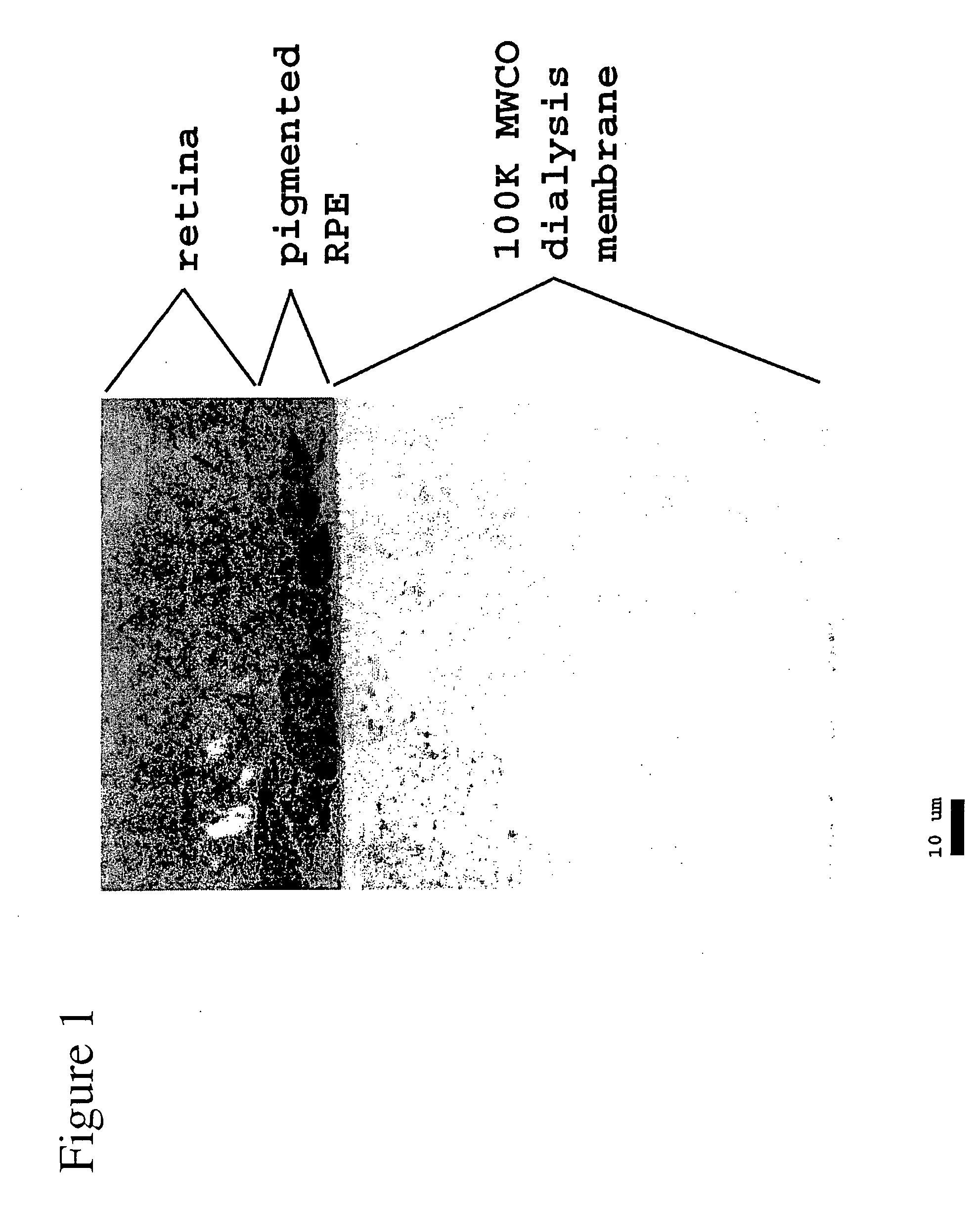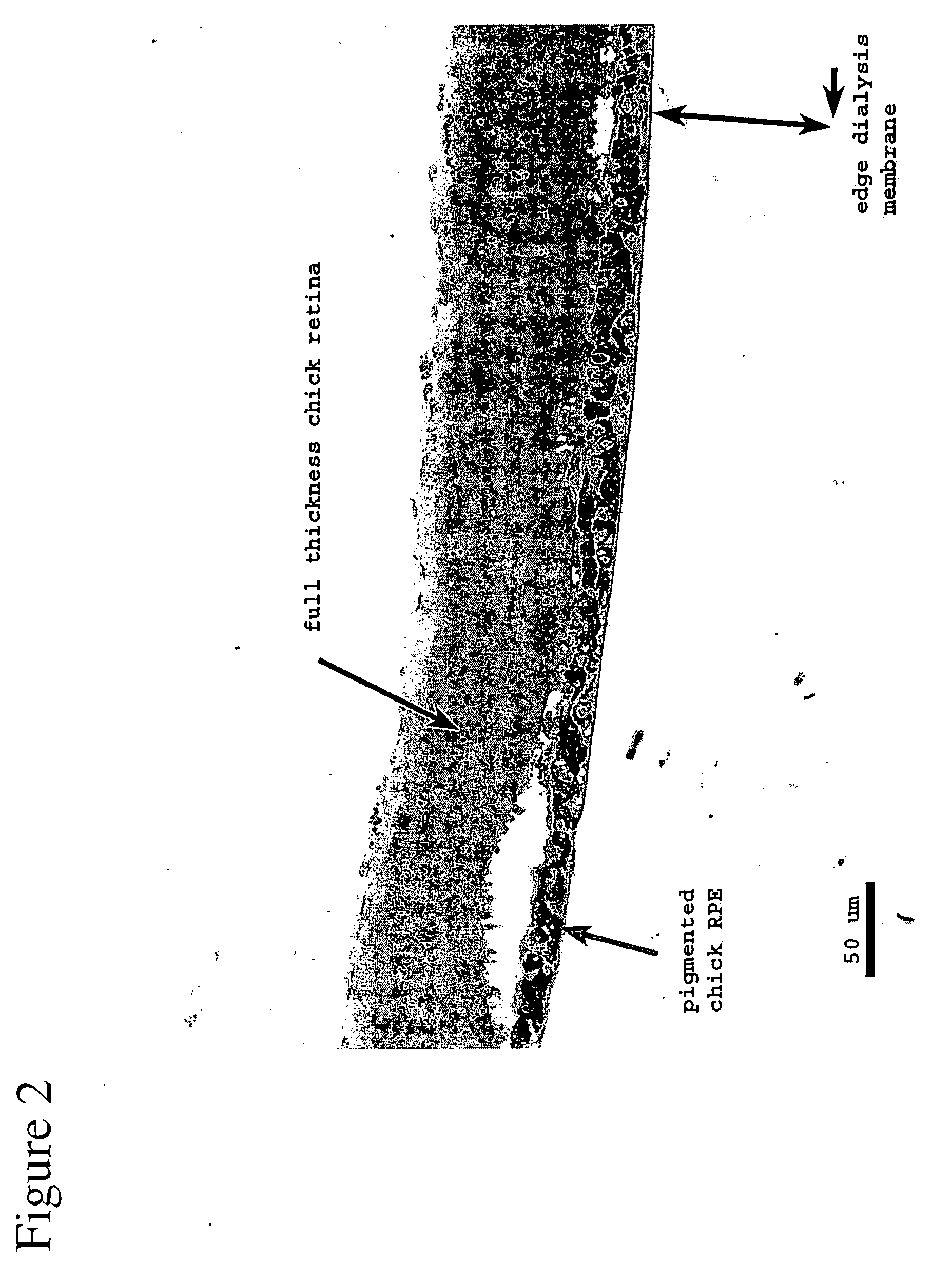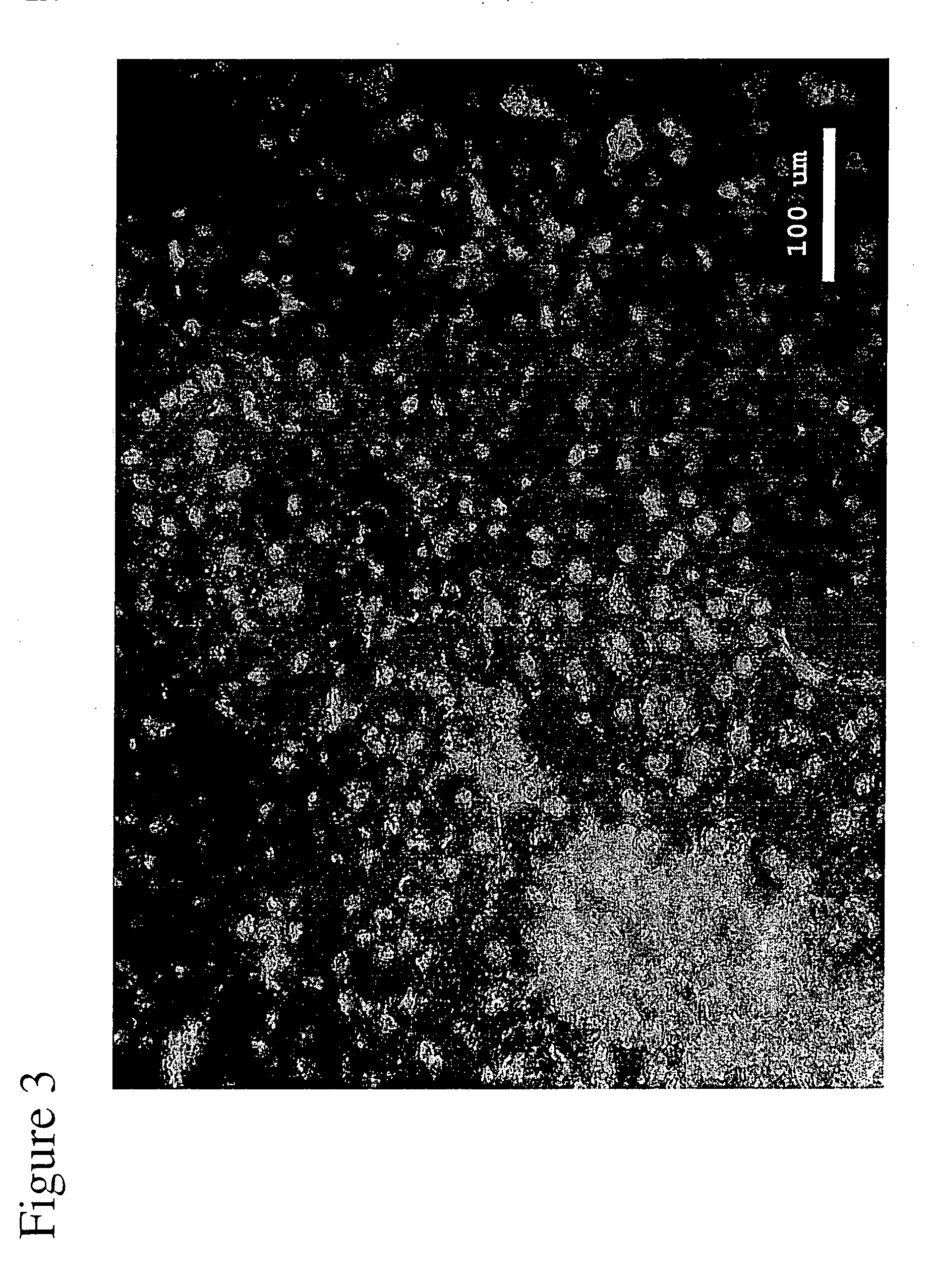Artificial biocompatible material as a support for cells in a retinal implant
a retinal implant and biocompatible material technology, applied in the field of eye disorders, can solve the problems of inability of transplanted cells to spontaneously form an organized, inability to perform phenotypic functions of native rpe cells, and inability to organize spontaneously, so as to achieve the effect of improving precision
- Summary
- Abstract
- Description
- Claims
- Application Information
AI Technical Summary
Benefits of technology
Problems solved by technology
Method used
Image
Examples
Embodiment Construction
[0018] The present invention provides an implant to rescue or restore diseased photoreceptor cells, using transplantation of RPE, IPE, and / or stem cells adhered on an artificial biocompatible support material to the sub-retinal space of the eye. The artificial biocompatible support material serves both as a transplant / support material and as a basement membrane (Bruch's membrane) patch. Even though the following detailed description refers to a dialysis membrane as the artificial biocompatible support material, the present invention is not limited to the dialysis membrane as described supra in the summary and description of the figures. Furthermore, the cells or stem cells used for this invention could be of human or animal origin as well as possibly Xenobiotic organ, tissue and cell transplants.
Cell Culture
[0019] Human RPE cells for transplantation were maintained in D-MEM / F-12 solution, supplemented with 10 percent fetal bovine serum at T=37 degrees Celsius with 6.5 percent car...
PUM
 Login to View More
Login to View More Abstract
Description
Claims
Application Information
 Login to View More
Login to View More - R&D
- Intellectual Property
- Life Sciences
- Materials
- Tech Scout
- Unparalleled Data Quality
- Higher Quality Content
- 60% Fewer Hallucinations
Browse by: Latest US Patents, China's latest patents, Technical Efficacy Thesaurus, Application Domain, Technology Topic, Popular Technical Reports.
© 2025 PatSnap. All rights reserved.Legal|Privacy policy|Modern Slavery Act Transparency Statement|Sitemap|About US| Contact US: help@patsnap.com



